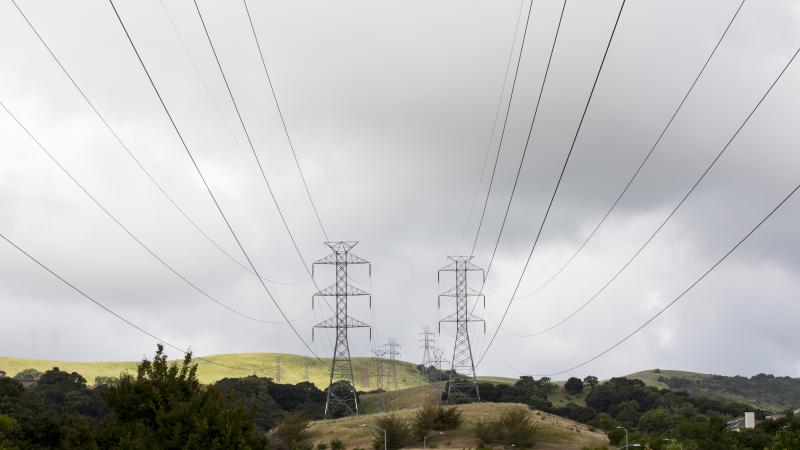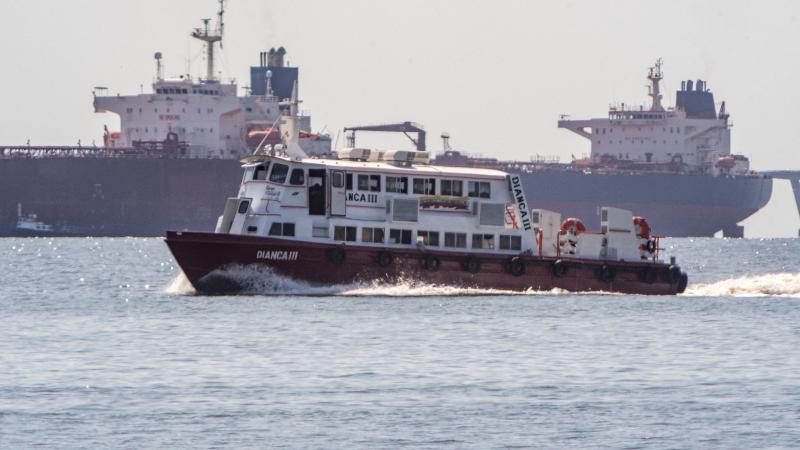The ocean floor is rich in critical minerals, but getting them to the surface is no easy feat
The nodules at the bottom of the ocean, according to the Metals Company, do not contain toxic levels of heavy elements, as land ores do. Nearly the entire mass of the nodule contains usable minerals. The resulting strategic minerals can be processed with less environmental impact.
The ocean floor is awash in critical – often called strategic – minerals, but getting them to the surface is no easy feat.
According to the Society for Mining, Metallurgy & Exploration, "critical and strategic minerals are essential to the economic and national security of both industrialized nations like the United States and developing countries. They are key to manufacturing and agricultural supply chains, and to the successful deployment of modern technologies in a variety of industries, including telecommunications, national defense, and both conventional and renewable energy."
Lying on the ocean floor are hunks of metal packed with these minerals. These polymetallic nodules, as they are called, contain cobalt, nickel, copper, and manganese, which are the essential minerals needed to make batteries and other green energy hardware. “The resource is real,” David Hammond, principal mineral economist with the Hammond International Group, told Just The News.
Deep sea mining offers another potential avenue to meet what is expected to be an exponential increase in demand for these minerals in the coming decades, but there’s a number of challenges before industry can efficiently harvest them from the ocean floor.
Nodules
The International Energy Agency has an interactive website on its projections of critical mineral demand for the next 26 years under various policy scenarios.
Under its “net zero emissions by 2050” scenario, annual copper demand between 2022 and 2040 is projected to increase by approximately 160%, and nickel demand will increase about 227% in the same period. Cobalt demand will increase 285% by 2050, according to the agency.
The nodules at the bottom of the ocean, according to the Metals Company, do not contain toxic levels of heavy elements, as land ores do. Nearly the entire mass of the nodule contains usable minerals. Therefore, producing metals from the nodules won’t generate tailings, which are the leftover materials from processing of mined ore.
Hammond said the exact process by which they’re formed isn’t certain, but deep sea mining has been explored as a potential resource since the 1970s.
“The technology has been pursued on this for a long time, probably 30-plus years. This is not something that's totally brand new,” he said.
Rich resources of minerals are also found in hydrothermal vents called “black smokers.” These chimney-like structures form along volcanic ridges deep in the Atlantic and Pacific oceans, where tectonic plates come together.
“It's lava coming up, but it's also a chemical soup of minerals,” Hammond said.
There are four major challenges to developing these resources, the mineral economist said. There is the technical challenge of getting the ores to the surface. There are environmental concerns, as there are with any commercial-scale mining operations. And there are political challenges due to the uncertain regulatory environment of the open seas.
The nodules are found deep under the ocean, sometimes miles below the surface. Mining them is really just a matter of scooping them out of the sediment on the ocean floor. Companies are developing robotic tractors to vacuum them up. “It’s like bailing hay. You have to mow the bottom of the ocean,” Hammond said.
Then, it’s a matter of hauling them in a basket to the surface for processing, but that’s easier said than done.
“We can go down and get these things, just a few at a time, but we have to mine them at a rate that makes them commercially economic. And in my mind, that has not been proven yet,” Hammond said.
Law of the sea
If the technical challenges are overcome, there is the challenge of governance. National jurisdictional boundaries extend about 230 miles off the coast of a country. The international seabed area, which is the seabed and ocean floor outside the national jurisdictions, is the jurisdiction of the United Nations International Seabed Authority (ISA).
The ISA, headquartered in Kingston, Jamaica, exists to organize and control all mineral resources found in the area within its jurisdiction. As of May 2023, there are 169 members that have signed onto the organization. That doesn’t include the United States, because it never had the political support to ratify the United Nations Convention on the Law of the Sea, within which the ISA operates.
The organization regulates by consensus of its members, but this has yet to produce a finalized mining code. So the regulatory framework for this nascent industry remains murky.
Michael Lodge, ISA secretary-general, expressed concerns about enforcement of the ISA regulations in 2021, explaining that the organization has no “ocean-going vessels nor deep-sea submersibles at its disposal.”
Besides implementing and enforcing environmental regulations, there is also the question of royalties. On land, a mining company pays a tax that then benefits federal, state and local jurisdictions. “How do you tax the resource and how do you distribute the tax revenue?” Hammond asked rhetorically.
The environment
The other challenge is the environmental concerns. As with any mining operation, even those that benefit the green energy agenda, there are almost always environmental groups that oppose it. Already, activists with Greenpeace are organizing to stop deep sea mining.
The exact environmental impacts of deep sea mining, Hammond explained, aren’t entirely understood. “You're basically going to put a big sifter through there. You're just going to take the top — I don't know — couple feet, maybe, of the ocean bottom. And you're going to rake it, and you're gonna disturb it. Well, we used to think that was a total barren zone. But now we know there's no place on Earth where there isn't some type of life,” Hammond said.
The mining process would create a sediment plume, and researchers are studying exactly how that would impact ocean life.
When it comes to black smokers, the vents need to be broken off and hauled to the surface. Besides being rich in minerals, the warm water around the vents also fosters large amounts of biodiversity.
With mandates driving a thirst for minerals, the deep sea is getting a closer look, and there’s more discussion being had on how to overcome the various barriers that keep the sea from being mined.
Even if the regulatory challenges were overcome that allowed an operation to go forward, Hammond said, it won’t happen if it can’t be done profitably. “How do you get that much material up? Even though it’s a higher grade [of mineral content], you got to have economies of scale to justify the expense. So, I’m not skeptical, but I don’t know. This still has a lot of uncertainty in it,” he said.
The Facts Inside Our Reporter's Notebook
Links
- the Society for Mining, Metallurgy & Exploration
- polymetallic nodules
- Hammond International Group
- interactive website
- according to the Metals Company
- leftover materials from processing of mined ore
- black smokers
- developing robotic tractors
- United Nations International Seabed Authority
- mineral resources found in the area
- doesn't include the United States
- political support to ratify the United Nations Convention on the Law of the Sea
- failed to produce a finalized mining code
- expressed concerns about enforcement of the ISA regulations
- almost always environmental groups that oppose it
- activists with Greenpeace are organizing to stop deep sea mining
- sediment plume
- fosters large amounts of biodiversity















